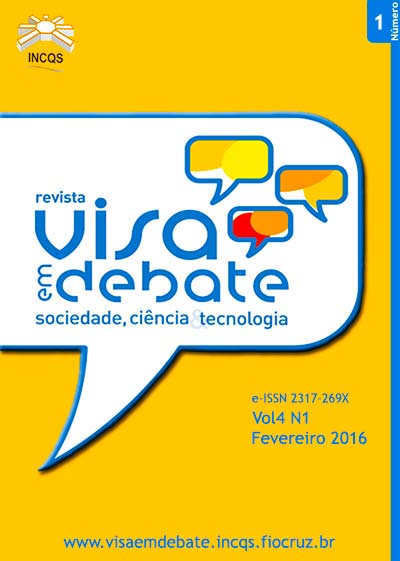Cyanobacteria in water sources used for autonomous systems of water supply and sewerage (SAAE) in municipalities of the Forest Zone South of Pernambuco
DOI:
https://doi.org/10.3395/2317-269x.00628Keywords:
Public Health, Monitoring of Water, SAAE, Potability StandardsAbstract
Cyanobacterial blooms have social, economic, and environmental impacts, changing the physical and chemical characteristics of the water and affecting the survival of aquatic organisms. This phenomenon risks the quality of water intended for human consumption, through the alteration of organoleptic properties causing changes in taste and odor of water supply. In addition, this phenomenon produces toxins that can generate consequences for human health. In Brazil, this problem is worsening, and the possibility of cyanotoxin presence has become chronic. This study aimed to present a diagnosis and evaluate the results of analysis of cyanobacterial samples from waters of public supply in municipalities of the forest zone south of Pernambuco monitored by Autonomous Services of Water and Sewage (SAAEs). The study was conducted from November 2011 to December 2014 in the Water Quality Laboratory FUNASA (PE). The results showed the presence of 29 species belonging to 13 families and three subclasses. These included cyanobacteria’s genres producing cyanotoxins, such as Planktothrix, Cylindrospermopsis, alongside others, despite the quantitative analysis being within the limits established by law (99% of the analyzed samples). Furthermore, the study showed the importance of monitoring cyanobacteria in water sources of Pernambuco in order to mitigate potential problems inherent to the enviroment and human and animal health.Downloads
Downloads
Published
Issue
Section
License
Copyright (c) 2016 Health Surveillance under Debate: Society, Science & Technology (Vigilância Sanitária em Debate: Sociedade, Ciência & Tecnología) – “Visa em Debate”

This work is licensed under a Creative Commons Attribution-NonCommercial-NoDerivatives 4.0 International License.
COPYRIGHT ALLOWANCE The author (s) hereinafter designated as the ASSIGNOR hereby assign and transfer, free of charge, the ownership of the copyrights related to this ARTICLE to the Vigilância Sanitária em Debate: Sociedade, Ciência & Tecnologia (Health Surveillance under Debate: Society, Science & Technology) – Visa em Debate, represented by FUNDAÇÃO OSWALDO CRUZ, established at Av. Brasil, nº 4365, Manguinhos, Rio de Janeiro, RJ, Brazil, CEP 21045-900, under the conditions set out below: (a) The terms and conditions set forth in this Agreement shall apply to the following: 1. The ASSIGNOR declares that they s(he) is (are) the author (s) and owner (s) of the copyrighted property of the ARTICLE submitted. 2. The ASSIGNOR declares that the ARTICLE does not infringe the copyrights and / or other property rights of third parties, that the disclosure of images (if any) has been authorized and that they s(he) assume(s) full moral and / or property liability for its content, before third parties. 3. THE ASSIGNOR assigns and transfers all copyrights relating to the ARTICLE to the ASSIGNEE, especially the rights of editing, publication, translation into another language and reproduction by any process or technique. The ASSIGNEE becomes the exclusive owner of the rights related to the ARTICLE, and any reproduction, totally or partially, is prohibited in any other means of publicity, printed or electronic, without prior written authorization from the ASSIGNEE. 4. The assignment is free and, therefore, there will be no remuneration for the use of the ARTICLE by the ASSIGNEE.







